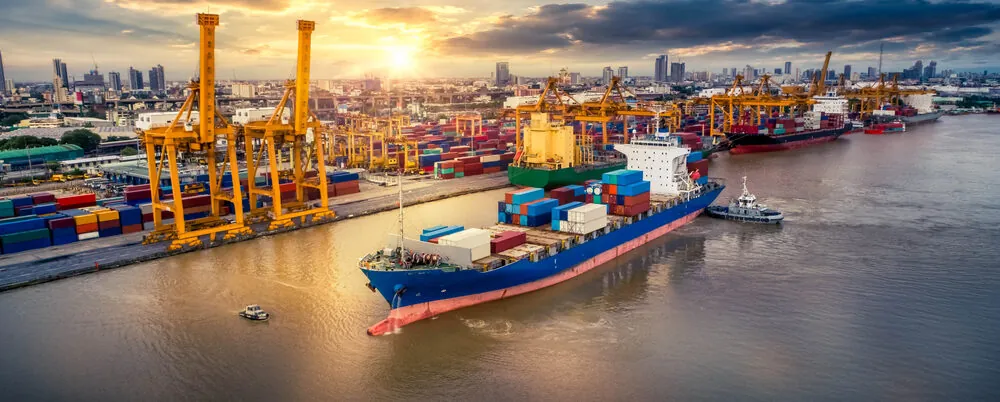Top 10 Largest Ports In North America
Have you ever wondered how we get shipments to and from places all over the globe? Although air freight is a viable option for international shipping, ocean freight shipping is also indispensable. While slower than air freight shipping, transporting your items via container ship is the cheaper option. Ocean freight shipping also allows for flexibility when it comes to seasonal and market trends. These two reasons are why ocean freight continues to be a lucrative part of the logistics industry, with over 4,700 ports operating worldwide.
From the ground up, the ports in the United States have grown tremendously, with some even the busiest in the world. These bustling hubs keep trade, supply chains, and the economy moving. From the West Coast to the East Coast, the United States has over 300 ports, both inland and at sea, but the top 10 largest ports are also the busiest and financially successful. Let’s break down the 10 largest ports in North America (specifically the United States) and explore the significance of ocean freight shipping in this country.
1. The Port of Los Angeles
The Port of Los Angeles is known as one of the world’s busiest seaports, ranking No.1 in the United States, and even nicknamed “America’s Port.” Located in San Pedro Bay, just south of Los Angeles, the port has been in use since 1907. In the late 1950s, the port adopted containerized cargo, which revolutionized logistics. The Port of Los Angeles works together with the Port of Long Beach (see below) to transport almost all of the freight from China, Japan and southeastern Asia. No wonder the Port of Los Angeles is one of the largest ports in North America!
Total Size: 7,500 acres
Cargo Terminals: 25 terminals
Vessels Handled: 1,867 vessels
Annual Cargo Tonnage: 222 million metric revenue tons
Annual Cargo Value: $294 billion
Leading Trade Partners: China, Japan, South Korea
Direct & Indirect Employment: 16 million jobs all over the U.S. can be attributed directly or indirectly to the port.
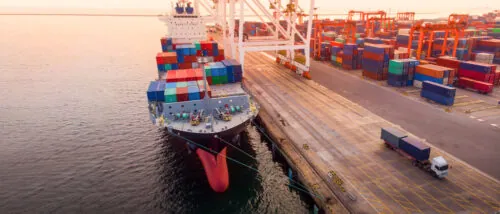
2. The Port of New York & New Jersey
The Port of New York and New Jersey is the largest port on the East Coast. The Port Authority of New York and New Jersey was established in 1921 as a joint venture between the two states. However, the waterways had been used for decades before to import and export goods.
Total Size: 2,000 acres, 25 miles of waterfront land
Cargo Terminals: 8 major terminals
Vessels Handled: 6,000 vessels
Annual Cargo Tonnage: 74 million metric revenue tons
Annual Cargo Value: $205 billion
Leading Trade Partners: China, India, and Germany
Direct & Indirect Employment: 350,000 jobs in total
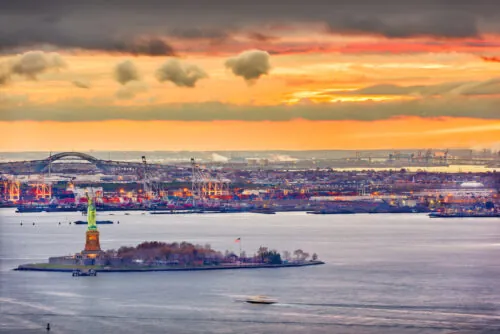
3. The Port of Long Beach
The Port of Long Beach is only 18 miles from the Port of Los Angeles, but it’s still a major hub for container shipping traffic between Asia and North America. The port was founded in 1911, and grew from there. The port is known for being one of the first to adopt eco-friendly policies to reduce the impact of freight on the environment. The port ensures these practices through the Green Port Policy and the Clean Air Action Plan.
Total Size: 3,200 acres
Cargo Terminals: 13 terminals
Vessels Handled: 2,000 vessels
Annual Cargo Tonnage: 78.2 million metric revenue tons
Annual Cargo Value: $180 billion
Leading Trade Partners: China, India, and Germany
Direct & Indirect Employment: 350,000 jobs in total
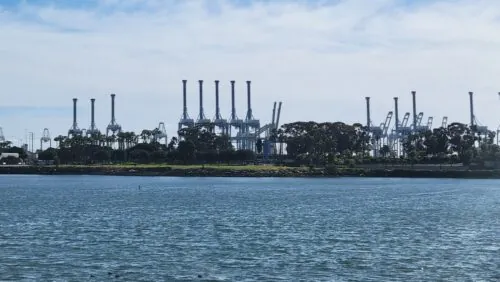
4. The Port of Georgia
The Georgia Ports Authority was established in 1945. The Port of Georgia comprises two ports – Savannah and Brunswick, which combined, make it the fourth largest port in the U.S. The Port of Savannah is the largest single-terminal container facility in the Western Hemisphere.
Total Size: 1,200 acres with 1,000 acres planned to be added on in the future.
Cargo Terminals: 7 terminals
Vessels Handled: 3,000 vessels
Annual Cargo Tonnage: 300 million tons
Annual Cargo Value: $100 billion
Leading Trade Partners: China, South Korea, Germany, Mexico, and Brazil
Direct & Indirect: 423,000 jobs in total
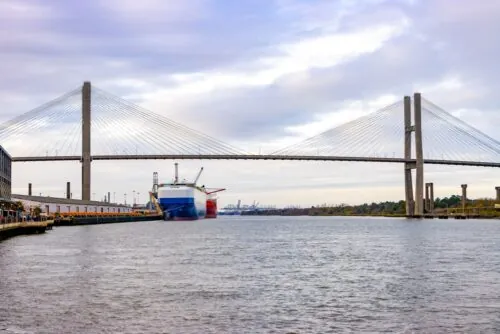
5. The Port of Seattle
Founded in 1911, the Port of Seattle is one of the largest container ports in the U.S. and known for being a leader in environmental restoration and shipping practices. The Port of Seattle also founded the Seattle-Tacoma International Airport.
Total Size: 4,200 acres
Cargo Terminals: 12 terminals
Vessels Handled: 3,000-4,000 vessels
Annual Cargo Tonnage: 12-15 million tons
Annual Cargo Value: $300 billion
Leading Trade Partners: China, Germany, South Korea, Brazil, and Mexico
Direct & Indirect Employment: 151,400 jobs in total

6. The Port of Houston
The Port of Houston, the largest port on the Gulf Coast, was established in 1914. The port has many notable firsts under its belt. It was the first port to be built with federal funds and local matching funds, and was the port for the first direct shipment of cotton to Europe in 1919. In 1981, it was the first port to use a double-stack container train.
Total Size: 10,000 acres, 50 miles long
Cargo Terminals: 7 terminals
Vessels Handled: 8,000-10,000 vessels
Annual Cargo Tonnage: 247 million metric revenue tons
Annual Cargo Value: $300 billion
Leading Trade Partners: South Korea, China, Brazil, Germany, and Mexico
Direct & Indirect Employment: 335,000 jobs in total

7. The Port of Oakland
The third port located in California, the Port of Oakland, ranks among the top three on the entire West Coast. Established in 1927, the port handles 99% of all containerized goods that move through the northern part of the state.
Total Size: 2,000 acres
Cargo Terminals: 7 terminals
Vessels Handled: 1,500-2,000 vessels
Annual Cargo Tonnage: 10-12 million tons
Annual Cargo Value: $100 billion
Leading Trade Partners: Japan, South Korea, China, Taiwan, and Vietnam
Direct & Indirect Employment: 79,000 jobs in total
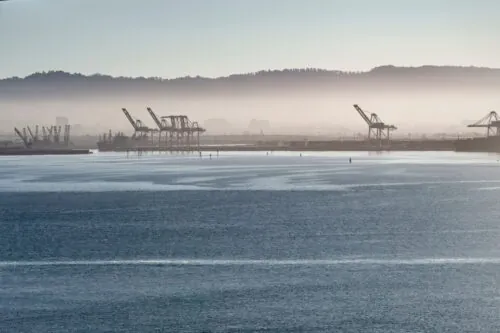
8. The Port of South Carolina
Also known as the Port of Charleston because of its location, the port has been around since 1942. It’s a central hub for importing and exporting automobiles and bulk commodities like forest products and coal.
Total Size: 3,200 acres
Cargo Terminals: 8 major terminals
Vessels Handled: 2,500-3,000 vessels
Annual Cargo Tonnage: 10-20 million tons
Annual Cargo Value: $100 billion
Leading Trade Partners: China, Germany, Brazil, and Vietnam
Direct & Indirect Employment: 187,200 jobs in total. The port provides 10% of all jobs in the state, offering wages 32% higher than the state average.
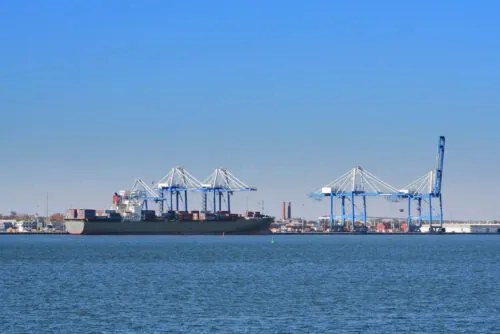
9. The Port of Virginia
Located in Norfolk, Virginia, the port is the third largest container port and the deepest water harbor on the East Coast. It was founded in 1952 and shelters the world’s largest naval base, Naval Station Norfolk.
Total Size: 2,200 acres
Cargo Terminals: 5 terminals
Vessels Handled: 3,000-4,000 vessels
Annual Cargo Tonnage: 10-12 million tons
Annual Cargo Value: $100 billion
Leading Trade Partners: Vietnam, China, Brazil, and Germany
Direct & Indirect Employment: 397,000 jobs in total
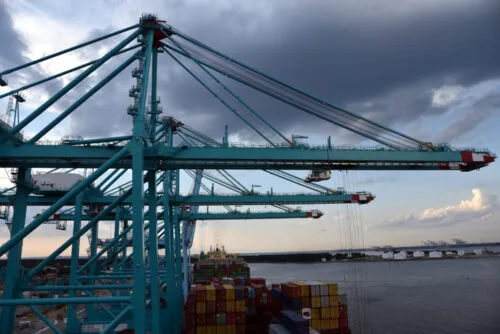
10. The Port of Miami
Although the Port of Tampa is the largest in the state of Florida by total land area, the Port of Miami is larger and busier by capacity and activity. The Port of Miami is located in Biscayne Bay and is the largest passenger port in the world, and one of the largest cargo ports in the U.S. The city of Miami purchased the port in 1913, but the modern port, well known for being a major hub for cruise lines, opened in 1968.
Total Size: 1,200 acres
Cargo Terminals: 6 terminals
Vessels Handled: 1,000-1,500 vessels
Annual Cargo Tonnage: 7-10 million tons
Annual Cargo Value: $80 billion
Leading Trading Partners: China, Peru, Brazil, Colombia, and Mexico
Direct & Indirect Employment: 300,000 jobs in total
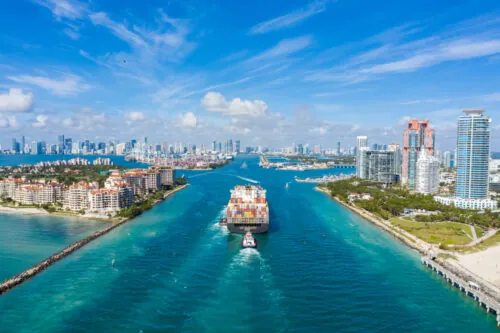
Why the Largest Ports in North America Matter
The ports in the United States, along with over 200 others, play a crucial role in both domestic and global commerce. They have a significant impact on regional and national economies, as well as on the industries that rely on ocean freight shipping. The largest ports in North America are incredible feats of human ingenuity as well, becoming monuments to the economy.
It is clear that these ports will continue to grow, expand, and adapt to new infrastructure and technologies in the future. We salute our country’s greatest seaports!

